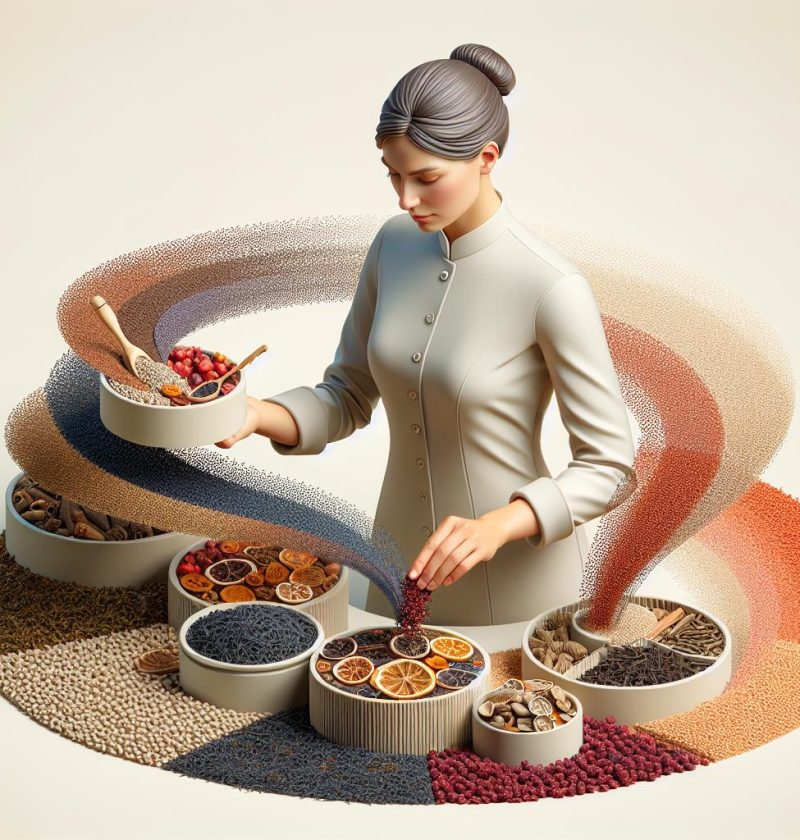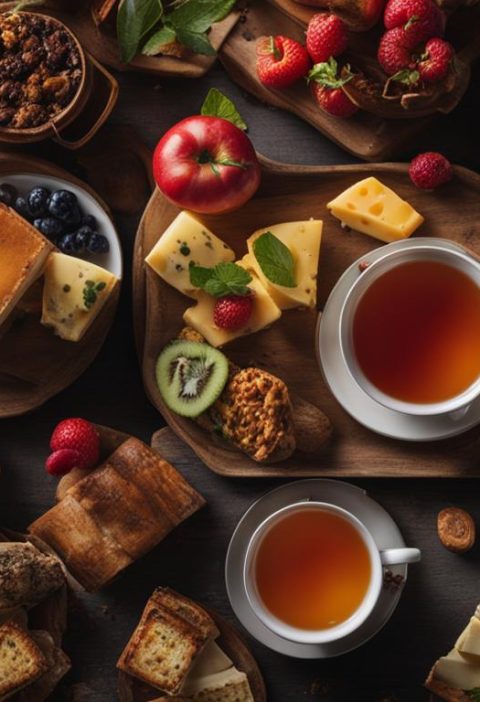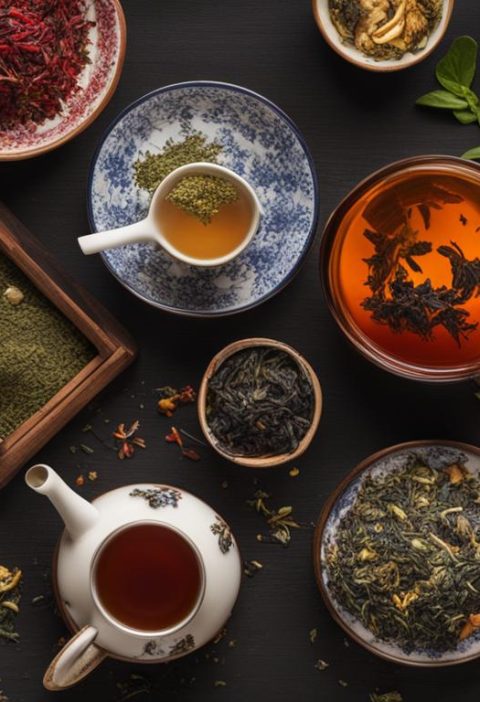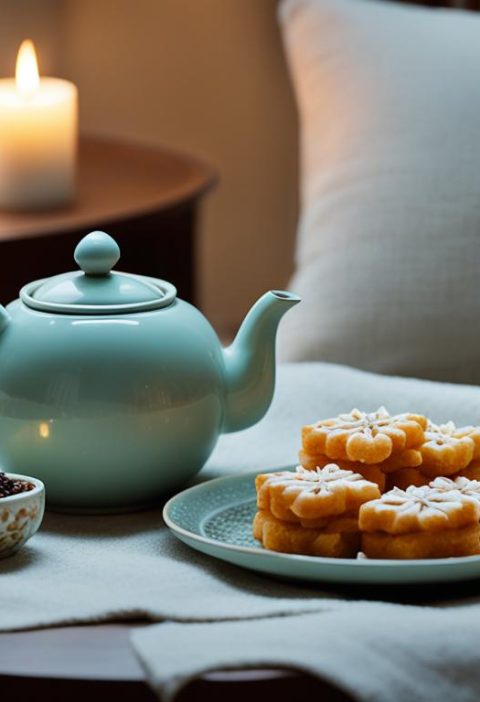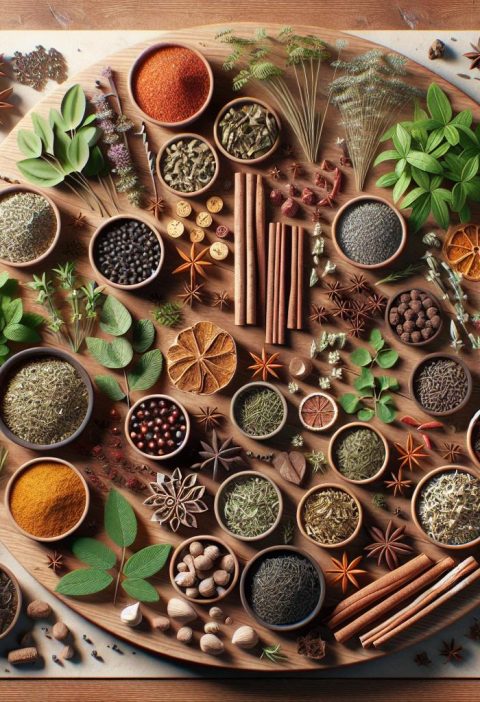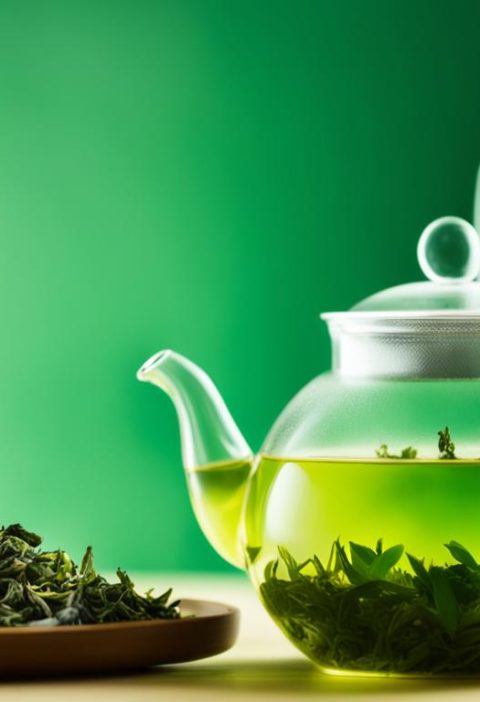So, you’ve decided to delve into the art of crafting the perfect tea blend. Whether you’re a seasoned tea enthusiast or just starting on this aromatic journey, mastering the art of blending teas is a delightful and rewarding experience. At the heart of a great tea blend lies the harmony of flavors, aromas, and textures that come together to create a truly exceptional brew.
When it comes to crafting the perfect tea blend, precision and creativity are our best allies. Each tea leaf, herb, or spice plays a crucial role in shaping the final flavor profile, ensuring a symphony of tastes that tantalize the senses. Join us as we explore the intricate world of tea blending, uncovering the secrets to creating unique and personalized blends that cater to our individual preferences and cravings.
Understanding Tea Flavor Profiles
For Novices: Exploring the Basics
Tea flavor profiles can be overwhelming at first, but understanding the basics is essential to appreciating the nuances of different blends. Here are some beginner-friendly tips to get started:
- Start by tasting various teas: Experiment with different types of tea to develop your palate.
- Take note of flavor elements: Pay attention to the taste, aroma, and mouthfeel of each tea.
- Learn about tea categories: Understand the distinctions between black, green, oolong, and white teas.
- Experiment with steeping: Adjust steeping times and temperatures to experience how they affect the flavor.
For Enthusiasts: Enhancing Your Palate
Once you’re comfortable with the basics, it’s time to deepen your understanding of tea flavor profiles. Here are some tips for enhancing your tea-tasting experience:
- Explore regional variations: Discover how factors like terroir and processing techniques influence flavor.
- Pair teas with food: Experiment with matching teas with different foods to enhance flavor interactions.
- Develop a tea vocabulary: Use terms like astringent, malty, floral, or vegetal to describe tea flavors accurately.
- Attend tea tastings: Participate in tastings to refine your palate and appreciate subtle flavor distinctions.
For Connoisseurs: Mastering Advanced Blending Techniques
For those seeking to elevate their tea blending skills to an expert level, here are some advanced techniques to master:
- Understand flavor balance: Achieve harmony by balancing various flavor profiles in your blends.
- Source high-quality ingredients: Use premium teas and botanicals to create complex and refined flavors.
- Experiment with blending ratios: Fine-tune your blends by adjusting the proportions of different ingredients.
- Create signature blends: Develop unique blends that reflect your personal tastes and preferences.
| Tea Type | Key Characteristics |
|---|---|
| Black Tea | Bold, malty, robust |
| Green Tea | Fresh, vegetal, grassy |
| Oolong Tea | Floral, fruity, toasty |
| White Tea | Delicate, sweet, light |
Selecting the Right Tea Base
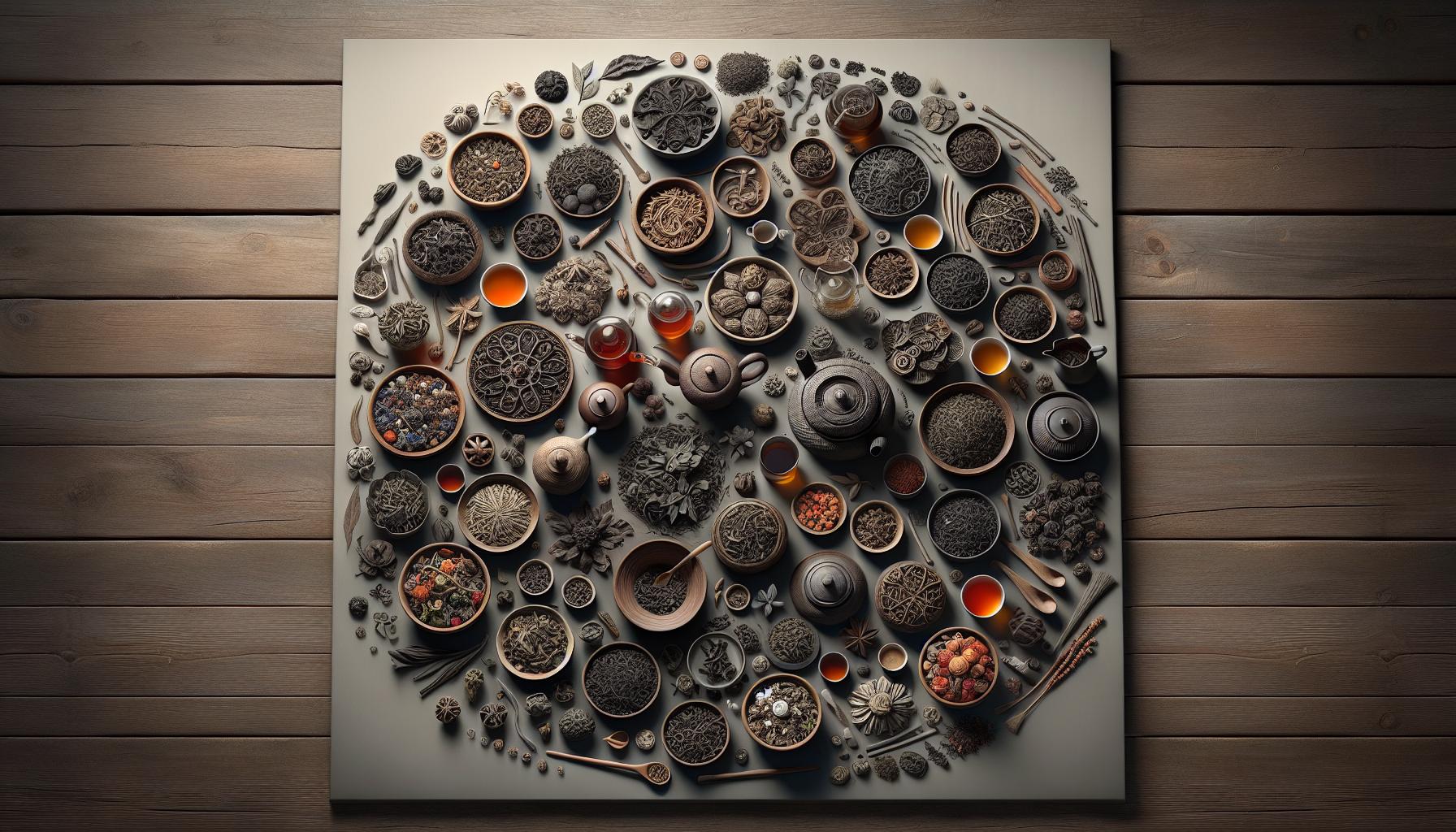
For Novices: Understanding the Basics
When crafting the perfect tea blend, Selecting the Right Tea Base is essential. For novices, it’s important to start with familiar teas like black tea or green tea before delving into more complex options. Here are some key points to consider:
- Begin by exploring different tea types such as black, green, oolong, and white teas to understand their flavor profiles.
- Experiment with a few varieties to identify the flavors you enjoy the most.
- Consider the intensity and body of the tea to match it with other ingredients in your blend.
For Enthusiasts: Exploring Regional Flavors
For those looking to enhance their tea blending skills, exploring regional variations can elevate your blends. Consider the following tips:
- Dive into teas from different regions like Assam, Darjeeling, Yunnan, and Uji to experience unique flavor profiles.
- Pair teas with complementary food items to understand how flavors interact.
- Develop a tea vocabulary to describe the aromas, tastes, and mouthfeel of different teas accurately.
For Connoisseurs: Mastering Advanced Techniques
Connoisseurs who aim to create signature tea blends can benefit from mastering advanced blending techniques. Here’s how you can take your tea blending to the next level:
- Understand the principles of flavor balance and experiment with blending ratios to achieve the desired taste.
- Source high-quality ingredients from reputable suppliers to ensure the excellence of your blends.
- Experiment with different brewing techniques and steeping times to unlock new flavors in your blends.
Remember, the key to crafting the perfect tea blend lies in selecting the right tea base that complements your desired flavor profile. Experiment, taste, and refine your blends to create a truly exceptional tea experience.
Exploring Complementary Ingredients
When it comes to crafting the perfect tea blend, Exploring Complementary Ingredients is key. Whether you’re just starting or consider yourself a tea connoisseur, incorporating the right elements can elevate your blend to new heights.
For Beginners: Getting Started with Flavor Pairing
- Start by experimenting with common complementary ingredients like dried fruits and spices.
- Consider adding a touch of citrus zest or vanilla beans to enhance the flavors of your base tea.
For Intermediate Tea Enthusiasts: Elevating the Flavor Profile
- Dive deeper into floral notes by including rose petals or lavender in your blend.
- Explore the world of herbal infusions such as mint or chamomile to create unique flavor combinations.
- Delve into exotic ingredients like saffron or star anise for a sophisticated flavor experience.
- Experiment with nutty undertones using ingredients like roasted nuts or cacao nibs to add depth to your blend.
Crafting the perfect tea blend is a journey of discovery and creativity. By exploring a wide range of complementary ingredients, we can create unique and flavorful teas that cater to every palate.
Blending Techniques and Ratios
For Beginners: Starting Out Right
- Begin with equal parts of base tea and complementary ingredients.
- Experiment with dried fruits and spices for familiar flavors.
- Keep ratios simple to taste individual elements.
- Aim for a balanced blend without overpowering any specific ingredient.
For Intermediate Enthusiasts: Refining Your Blend
- Explore floral notes and herbal infusions for complexity.
- Consider exotic ingredients like saffron or star anise for a unique touch.
- Play with nutty undertones using roasted nuts or cacao nibs for depth.
- Adjust ratios to highlight specific flavors based on personal preference.
- Dive into advanced techniques such as layering flavors for depth.
- Fine-tune ratios to create harmonious blends that evolve with each sip.
- Blend different types of teas to create complex flavor profiles.
- Incorporate rare ingredients sparingly for a touch of luxury.
| Key Points | Data/Statistics |
|---|---|
| Base tea to complement | 1:1 ratio |
| Ratio experimentation | Essential for mastery |
| Usage of rare ingredients | Requires expertise |
Experimenting with Custom Tea Blends
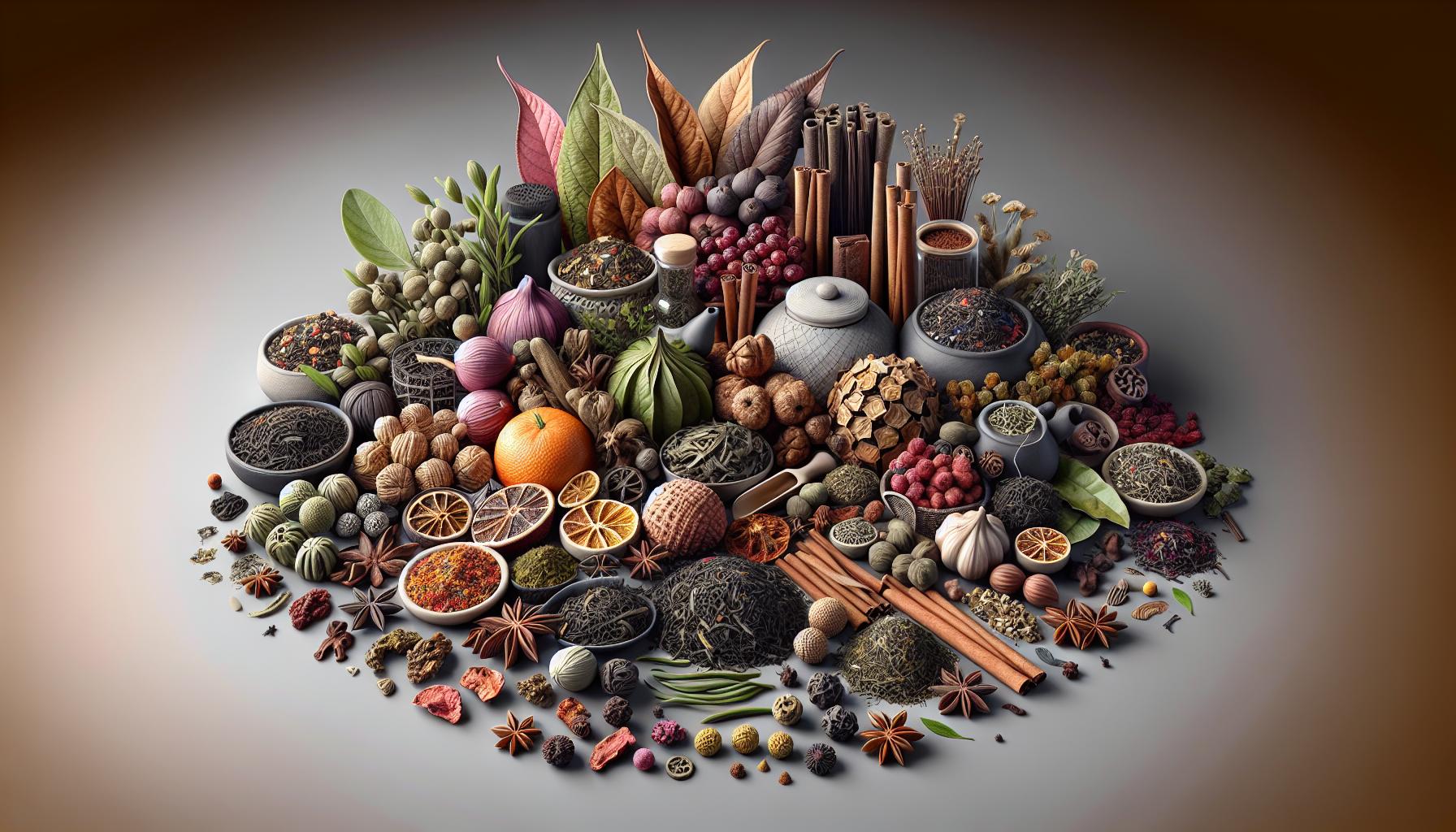
For Beginners: Getting Started with Tea Blending
- Start with equal parts of base tea and complementary ingredients.
- Focus on dried fruits and spices for familiar flavors.
- Experiment with basic floral notes for a subtle touch.
For Intermediate Tea Enthusiasts: Elevating Your Blends
- Explore herbal infusions and exotic ingredients like saffron or star anise.
- Incorporate nutty undertones using roasted nuts or cacao nibs.
- Play around with different ratios to find the perfect balance.
- Develop complex flavors by blending different tea types.
- Layer flavors for depth and richness in your blends.
- Sparingly add rare ingredients for a luxurious and unique tea experience.
Conclusion
Crafting the perfect tea blend is an art that caters to tea enthusiasts of all levels. From beginners starting with equal parts of base tea and complementary ingredients, to intermediate blenders experimenting with herbal infusions and exotic elements, to advanced tea connoisseurs blending various tea types for complexity – the possibilities are endless. By focusing on ratio experimentation, layering flavors, and selectively incorporating rare ingredients, we can create unique and luxurious tea blends that cater to our individual tastes. Whether you’re just starting out or looking to elevate your blending skills, the key is to embrace creativity, explore different flavor profiles, and enjoy the journey of crafting your own signature tea blend.
